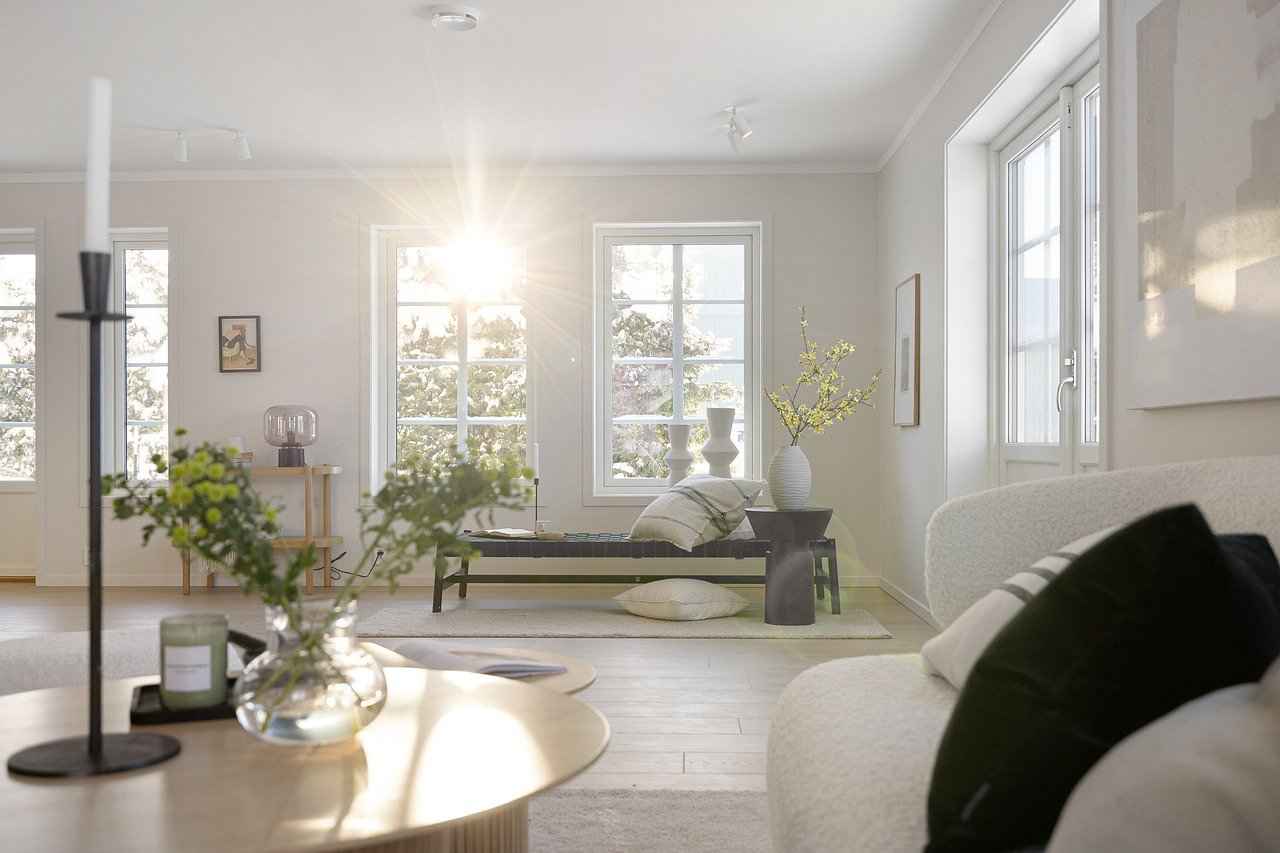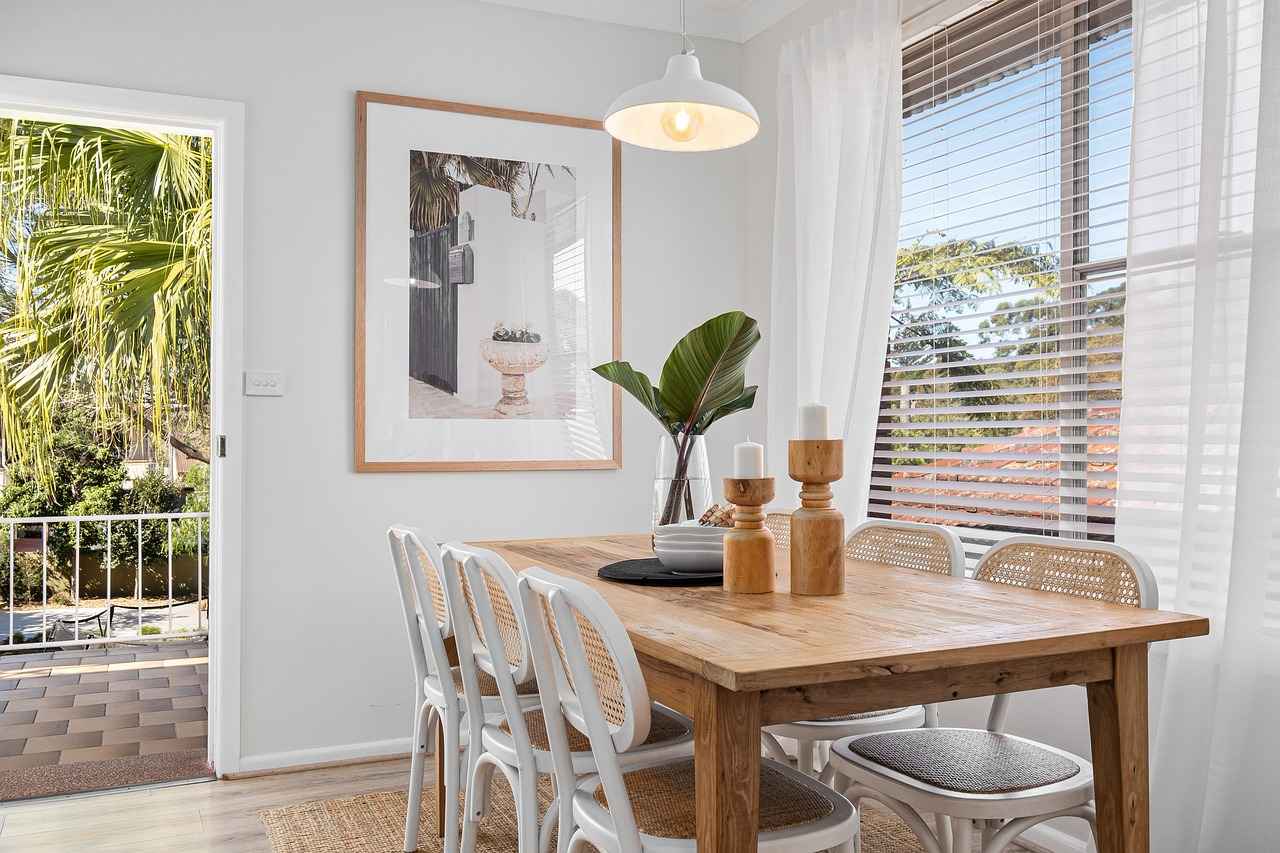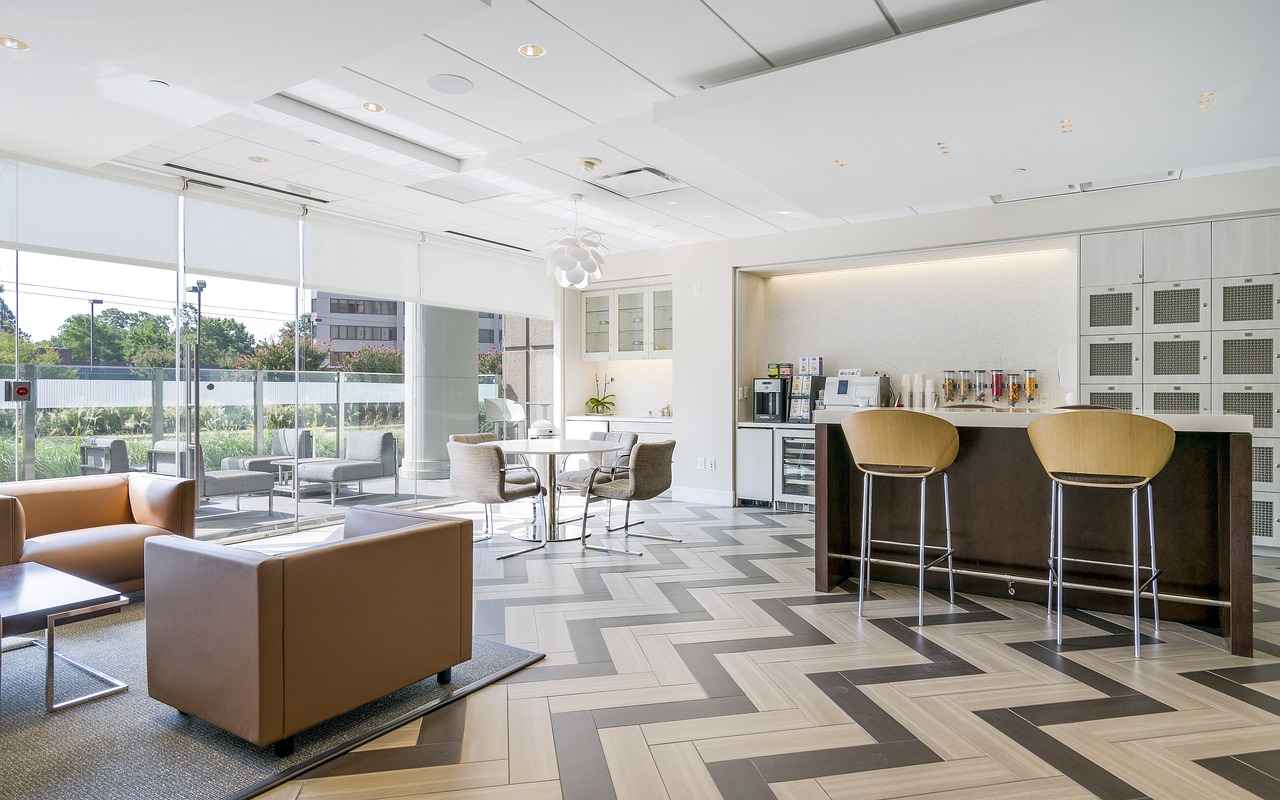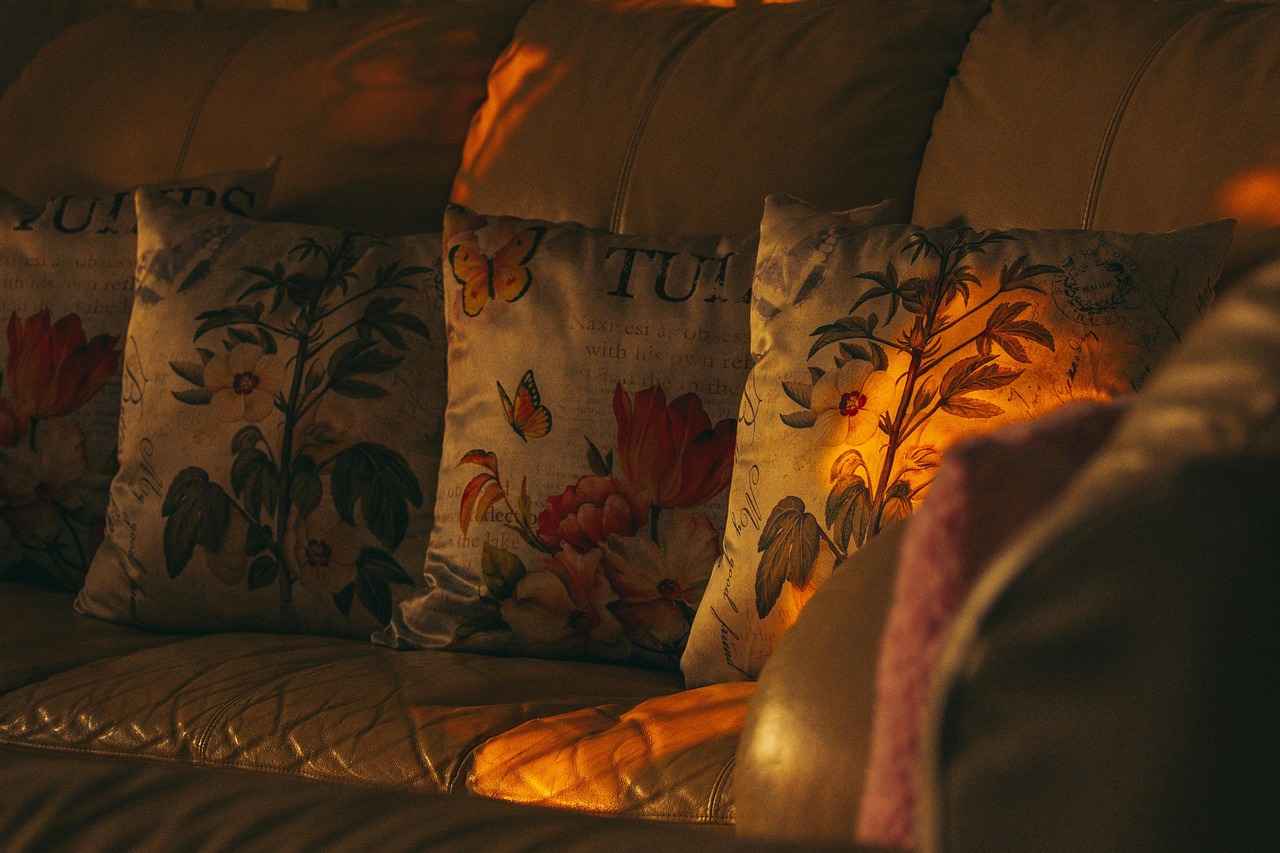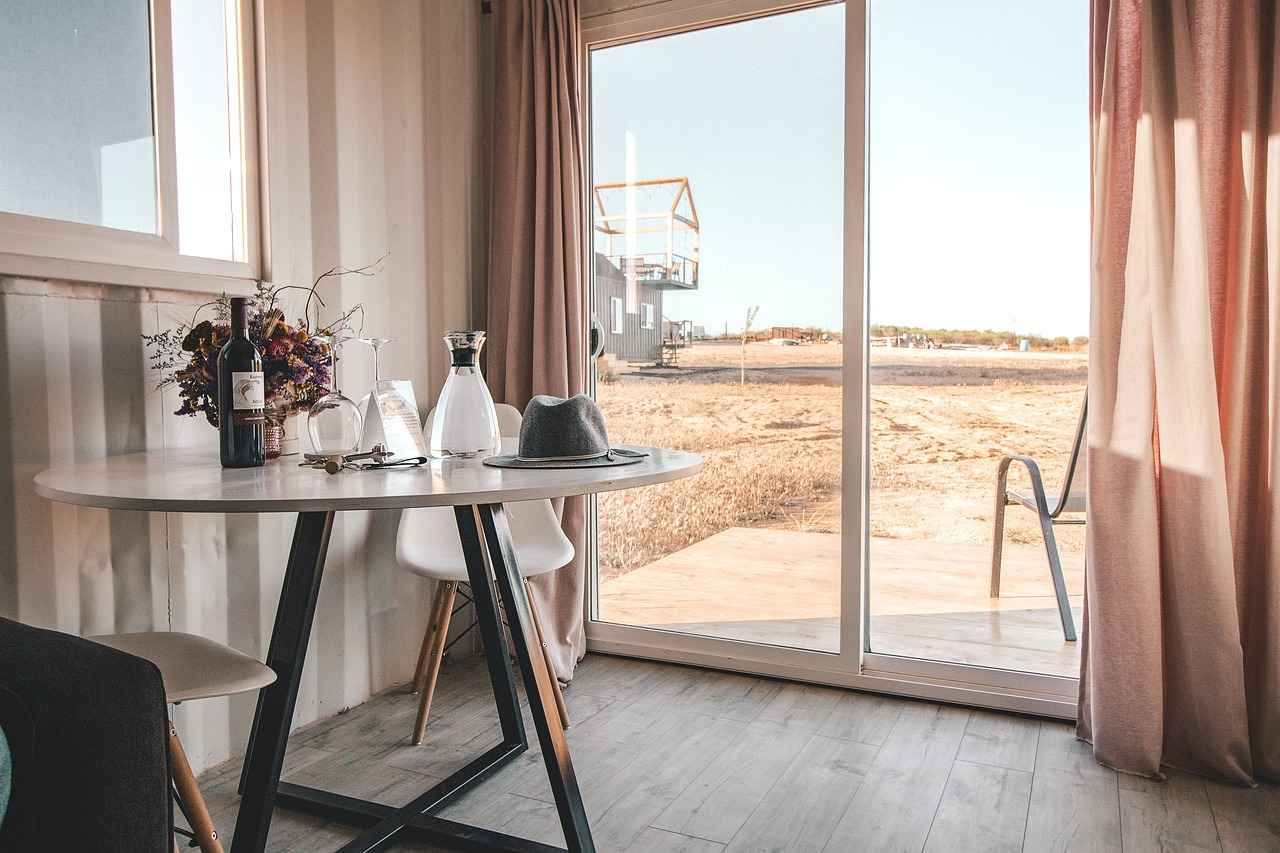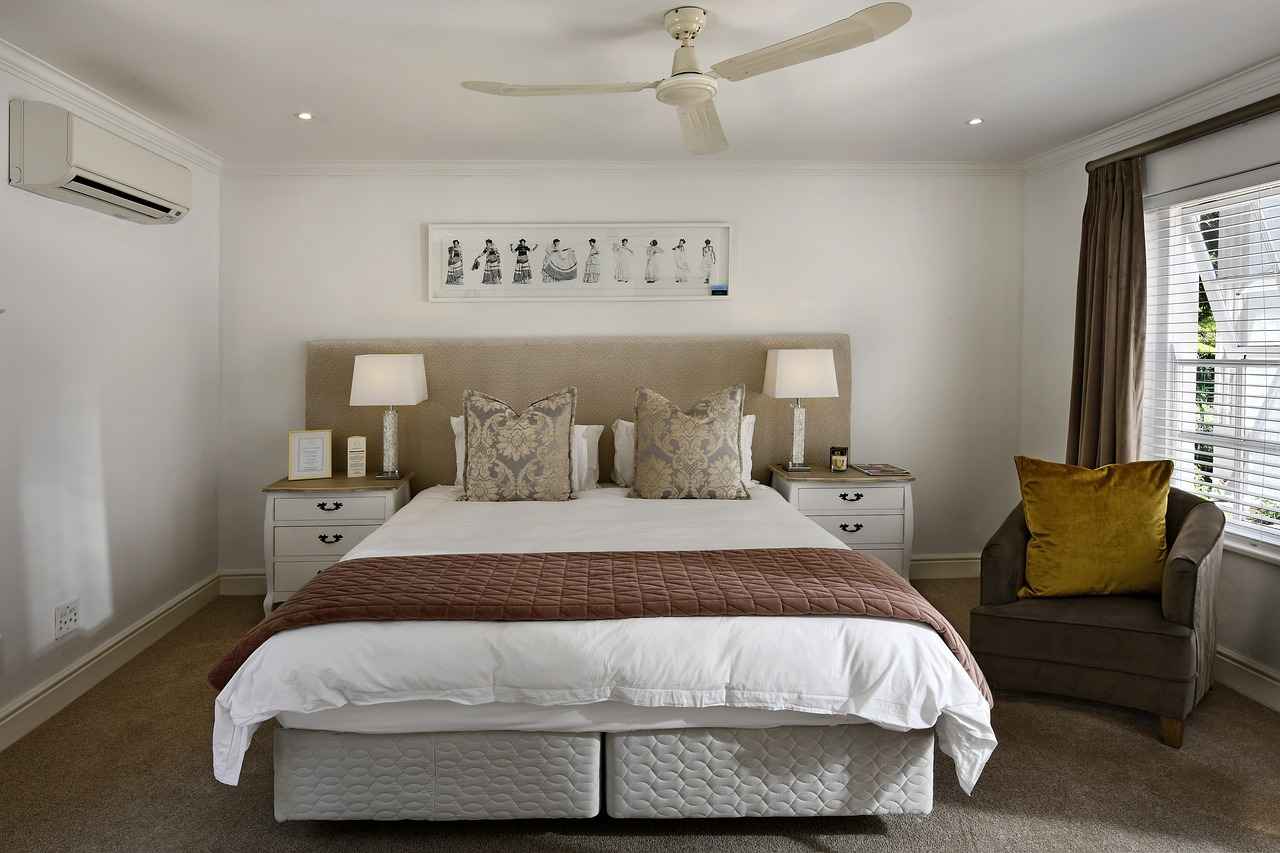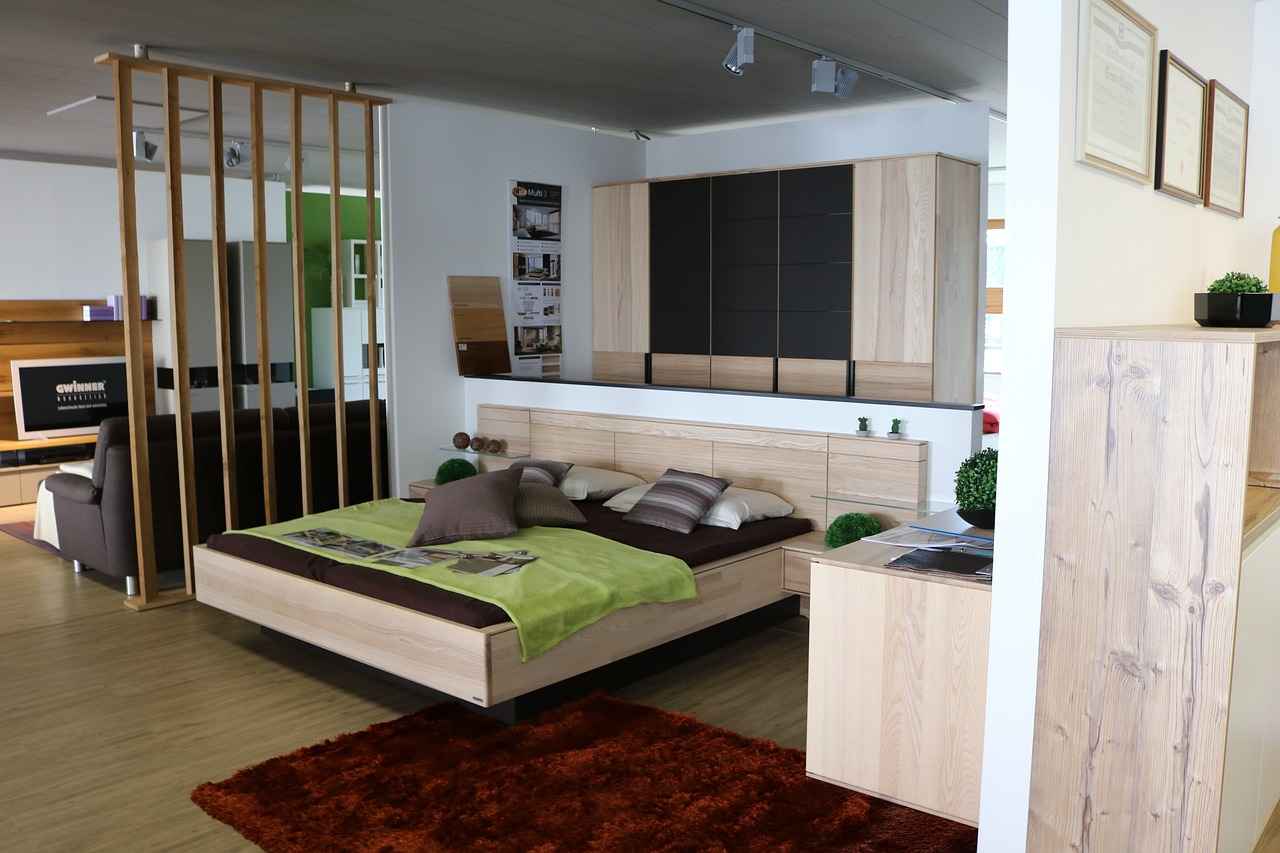Dividing a room without traditional walls is an innovative way to create distinct areas while maintaining an open and airy feel. Whether you are looking to separate a living space from a workspace, or create a cozy nook for relaxation, there are numerous creative and budget-friendly hacks available. This guide will explore effective methods to transform your space into functional areas that reflect your style and needs.
Using room dividers offers several advantages, enhancing both the functionality and aesthetics of your space. They provide privacy, help organize clutter, and can even improve the overall flow of the room. By incorporating dividers, you can create a sense of separation without sacrificing openness, making your space feel larger and more inviting.
Strategically positioning furniture is one of the simplest ways to create distinct areas within a room. Here are some tips:
- Sofas: Place a sofa back-to-back to create a visual barrier while maintaining an open layout.
- Bookshelves: Use a bookshelf as a room divider to add storage and display space.
- Tables: A large dining or coffee table can naturally segment different areas.
Selecting versatile furniture that serves multiple purposes can significantly enhance your space. Look for items that not only fit your design aesthetic but also offer functionality, such as:
- Storage Ottomans: These can act as seating while providing hidden storage.
- Foldable Tables: Great for small spaces, they can be easily moved or stored away.
Plants are excellent for adding life and color while acting as natural dividers. Tall plants like fiddle leaf figs or snake plants can create a green barrier, enhancing both privacy and aesthetics. Consider grouping plants in decorative pots to form a natural partition.
DIY projects can be a fun and cost-effective way to create room dividers. Here are some popular options:
- Curtains: Hang curtains from the ceiling to create a soft, adjustable divider that can be opened or closed as needed.
- Bookcase Dividers: Choose a stylish bookcase that can be accessed from both sides, providing storage and division simultaneously.
Color schemes and lighting can visually separate spaces without physical barriers. Consider painting one wall a different color to serve as an accent, or use color blocking techniques to delineate areas. Additionally, strategic lighting can enhance the separation effect; for example:
- Floor Lamps: Use them to create cozy reading nooks.
- Pendant Lights: Hang them over dining areas to define the space.
If you need flexibility, temporary solutions are ideal. Options like room screens or tapestries can be easily moved or adjusted. Room screens come in various styles and materials, allowing you to choose one that complements your decor. Tapestries can add texture and color, creating a warm and inviting atmosphere.
In conclusion, dividing a room without walls can be achieved through various creative and budget-friendly methods. By using furniture, plants, DIY projects, and strategic color and lighting choices, you can transform your space into functional areas while maintaining an open feel.

What Are the Benefits of Room Dividers?
Room dividers are increasingly becoming a popular choice for homeowners and renters alike, offering a versatile solution to maximize space. Understanding the benefits of room dividers can significantly enhance both the functionality and aesthetics of your living environment. Below, we explore how these innovative solutions can improve privacy, organization, and overall room design.
- Enhanced Privacy: One of the primary advantages of room dividers is the ability to create private spaces within a larger area. Whether you need a quiet corner for work or a cozy nook for relaxation, dividers can help shield you from distractions.
- Improved Organization: Dividers can help define different areas in a room, making it easier to organize furniture and belongings. This organization can lead to a more functional living space, where each area serves a distinct purpose.
- Visual Appeal: Room dividers come in various styles, materials, and colors, allowing you to add a personal touch to your decor. From elegant screens to artistic curtains, these elements can serve as focal points that enhance the overall aesthetic of your home.
- Flexibility: Unlike permanent walls, room dividers offer flexibility. You can easily move or rearrange them to adapt to your changing needs, making them an ideal solution for those who like to refresh their space regularly.
- Cost-Effective Solution: Building walls can be expensive and time-consuming. Room dividers provide a budget-friendly alternative that can achieve similar results without the commitment of construction.
By implementing room dividers, you can transform your space into a more functional and aesthetically pleasing environment, catering to your lifestyle needs.
Room dividers not only serve practical purposes but also contribute to the overall ambiance of your home. For instance, using a decorative screen can add a touch of elegance while also providing a subtle separation between areas. Additionally, plants can act as natural dividers, bringing life and color into your interiors while improving air quality.
There are various types of room dividers to choose from, each offering unique benefits:
- Folding Screens: These are portable and can be easily adjusted to create different layouts.
- Bookshelves: A stylish way to divide spaces while providing additional storage.
- Curtains: Flexible and soft, curtains can be drawn or opened to create different levels of privacy.
- Plants: Use tall plants or a vertical garden to create a natural barrier.
Choosing the right type of room divider depends on your specific needs, style preferences, and the layout of your space.
To maximize the benefits of room dividers, consider the following tips:
- Think About Flow: Ensure that the placement of dividers does not obstruct the natural flow of the room.
- Layering: Combine different types of dividers for a more dynamic look. For example, pairing a bookshelf with a curtain can create depth.
- Personalize: Use dividers that reflect your style and personality, making your space feel uniquely yours.
By understanding the benefits of room dividers and how to use them effectively, you can create a more organized, private, and visually appealing living space.
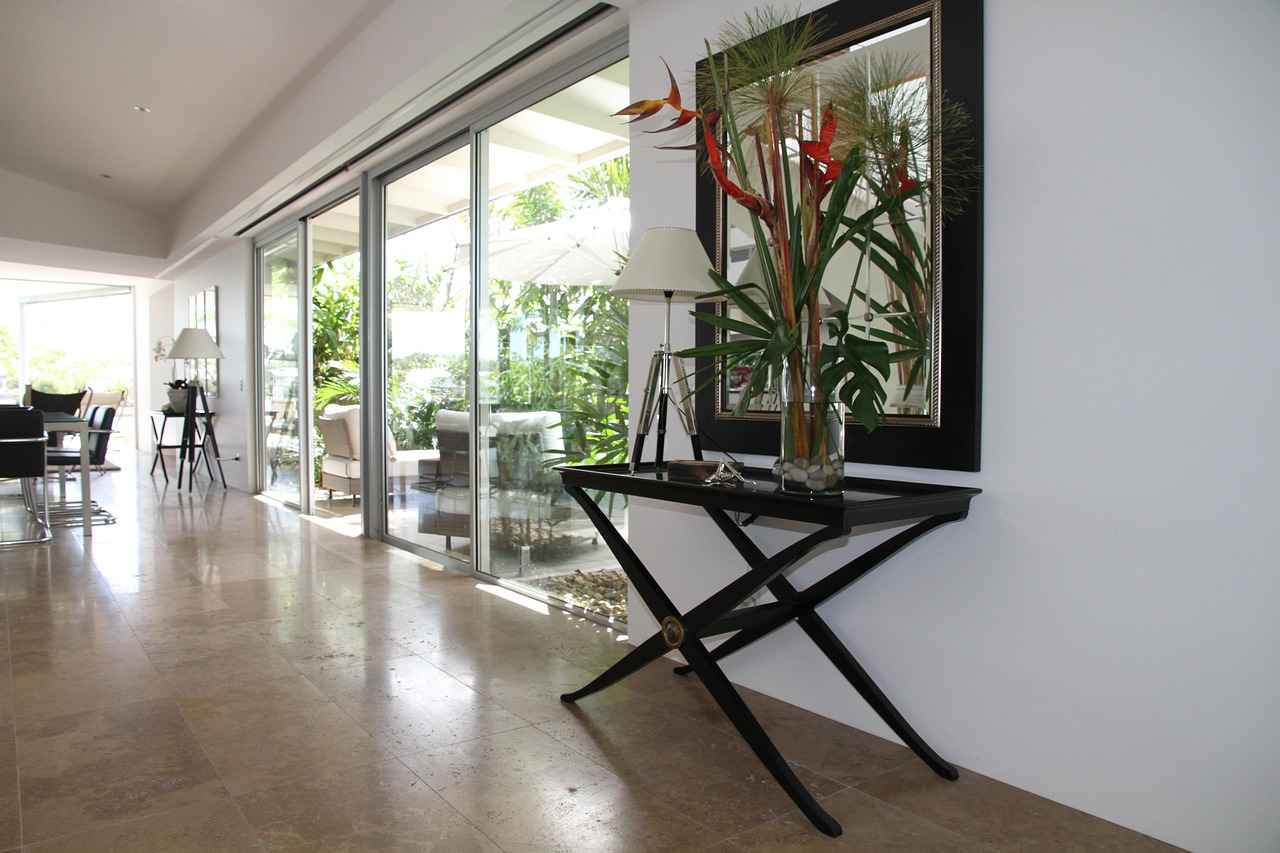
How to Use Furniture for Division?
Furniture placement is a powerful tool in interior design, especially when it comes to creating distinct areas within a room. By strategically positioning items like sofas, bookshelves, and tables, you can achieve effective separation without the need for walls. This approach not only enhances the functionality of a space but also adds visual interest and organization.
When planning your layout, consider the following strategies:
- Define Purpose: Before arranging furniture, identify the purpose of each area. Are you creating a reading nook, a workspace, or a social gathering spot? Understanding the function will guide your choices.
- Use Sofas as Barriers: Positioning a sofa can effectively delineate spaces. For example, placing a sofa perpendicular to a wall can create a cozy living area while leaving the back open for a dining space.
- Incorporate Bookshelves: A tall bookshelf can serve as a stylish room divider. It not only separates areas but also provides storage and decorative opportunities. Ensure it is anchored securely for safety.
- Tables as Dividers: Side tables or console tables can act as subtle dividers. Placing a console table behind a sofa can create a transition space, adding depth and dimension to the room.
- Layering with Rugs: Using area rugs can visually separate spaces. Choose different rugs for each area to enhance the division while maintaining a cohesive look.
To maximize the effectiveness of your furniture arrangement, consider these additional tips:
- Maintain Flow: Ensure there is a natural flow between areas. Avoid overcrowding and allow for easy movement throughout the space.
- Scale and Proportion: Select furniture that is appropriately sized for the room. Oversized pieces can overwhelm a small space, while tiny items may get lost in a large room.
- Color and Texture: Use color and texture to enhance the visual separation. Different colors or materials can signal distinct areas while maintaining harmony.
Incorporating furniture as dividers not only enhances functionality but also contributes to the overall aesthetic of your home. By thoughtfully arranging your pieces, you can create a dynamic and inviting environment that reflects your personal style.
Choosing the Right Furniture Pieces
When it comes to maximizing your living space, is essential. Not only can these items serve multiple functions, but they can also help in dividing rooms without the need for traditional walls. This approach allows for an open feel while creating distinct areas for various activities. Below, we explore several types of furniture that can effectively serve this purpose.
To enhance your space, consider the following versatile furniture options:
- Sofas and Sectionals: These can act as natural barriers while providing comfortable seating. Opt for L-shaped sectionals that can define living areas.
- Bookshelves: Tall bookshelves not only provide storage but can also create visual separation. They allow light to filter through while maintaining distinct zones.
- Room Dividers: Portable room dividers are an excellent choice for flexible spaces. They can be easily moved or reconfigured to suit your needs.
- Ottomans and Benches: These pieces can serve as both seating and a divider. They are particularly useful in small spaces where every square foot counts.
- Foldable Tables: A foldable table can function as a workspace or dining area while also acting as a divider when set up strategically.
Arranging your furniture thoughtfully can create a seamless flow while delineating spaces. Here are some tips:
- Anchor Key Pieces: Start by placing larger pieces, like sofas or bookshelves, to act as the focal point of each area.
- Maintain Pathways: Ensure that there is enough space for movement between different zones to avoid a cluttered feel.
- Layering: Use smaller furniture items to layer your space. For example, place a small table in front of a sofa to create a cozy conversation area.
- Use Area Rugs: Define different areas using area rugs to visually separate spaces without physical barriers.
Investing in multi-functional furniture can significantly enhance your space’s utility. These pieces not only save space but also offer flexibility in usage:
- Storage Ottomans: They provide a place to sit and store items, making them ideal for living rooms or bedrooms.
- Convertible Sofas: These can transform from a sofa to a bed, perfect for accommodating guests without taking up extra space.
- Drop-leaf Tables: These tables can be expanded or contracted based on your needs, making them versatile for dining or work.
By selecting the right furniture pieces and arranging them strategically, you can create a functional and aesthetically pleasing environment that caters to your lifestyle. Consider your space’s unique needs and invest in furniture that not only looks good but also serves multiple purposes. This approach not only enhances the functionality of your home but also allows you to maintain an open and inviting atmosphere.
Multi-Functional Furniture Options
When it comes to maximizing the functionality of small spaces, multi-functional furniture is a game changer. Among the various options available, items like ottomans and foldable tables stand out for their ability to serve multiple purposes while enhancing the overall aesthetics of a room. These versatile pieces not only provide additional seating or surfaces but can also act as effective dividers to create distinct areas within an open layout.
Investing in multi-functional furniture is an excellent choice for anyone looking to optimize their living space. These pieces are designed to save space and provide various uses, making them ideal for small apartments or homes. For instance, an ottoman can serve as a footrest, extra seating, and even offer hidden storage for blankets or magazines. Similarly, foldable tables can be used for dining, working, or as a display area, and can be easily tucked away when not in use.
Ottomans are particularly effective as room dividers due to their height and structure. When placed strategically, they can create a visual barrier between different areas of a room without obstructing light or airflow. This makes them perfect for open-concept living spaces. Additionally, many ottomans come with storage capabilities, allowing you to keep clutter at bay while maintaining a clean aesthetic.
Foldable tables offer incredible flexibility. They can be expanded for gatherings or folded away when space is needed. This adaptability allows you to transform a single room into multiple functional areas, such as a workspace, dining area, or hobby zone. By incorporating a foldable table as a divider, you can visually separate spaces while ensuring that the area remains open and inviting.
When selecting multi-functional furniture, consider both style and functionality. Look for pieces that complement your existing decor while offering practical benefits. For example, choose ottomans with attractive upholstery that matches your color scheme, or select foldable tables with a sleek design that can enhance the room’s overall look. This way, you can achieve a cohesive aesthetic while maximizing your space’s utility.
- Placement: Position ottomans and foldable tables in a way that defines different zones without closing off the space.
- Accessibility: Ensure that foldable tables are easily accessible for use, allowing for a quick transition between functions.
- Layering: Use rugs or lighting to further delineate areas created by your furniture arrangements.
Incorporating multi-functional furniture like ottomans and foldable tables can dramatically enhance the utility and aesthetics of your living space. By leveraging these versatile pieces, you can create a harmonious environment that meets your needs while maintaining an open and inviting feel. Whether you’re looking to define areas in a studio apartment or simply want to maximize your home’s functionality, these options are sure to provide the perfect solution.
Arranging Furniture for Optimal Space
Arranging furniture effectively is essential for creating a harmonious living space. A well-thought-out layout can enhance the flow of movement while defining specific zones within a room. Here, we will explore various strategies to optimize your furniture arrangement, ensuring both functionality and aesthetic appeal.
The arrangement of furniture plays a pivotal role in how a room functions. A well-arranged space not only looks appealing but also facilitates ease of movement and interaction. By creating distinct areas for different activities, you can enhance the overall experience of your living environment.
- Consider Traffic Patterns: Before placing furniture, observe the natural pathways in the room. Ensure that there’s enough space for people to move freely without obstruction.
- Group Furniture by Function: Arrange furniture based on its intended use. For instance, create a cozy conversation area with sofas and chairs, while positioning a desk or table in a separate zone for work or dining.
- Use Area Rugs: Area rugs can help delineate spaces, visually separating different zones while adding warmth and texture.
Creating distinct zones within a room enhances functionality. Here are some effective ways to achieve this:
- Utilize Furniture as Dividers: Consider using bookshelves, sofas, or even console tables to act as dividers. This not only separates areas but also adds visual interest.
- Incorporate Multi-Functional Pieces: Opt for furniture that serves multiple purposes, such as ottomans with storage or foldable tables. These pieces can adapt to your needs while saving space.
- Positioning is Key: Arrange larger pieces against walls to free up central space, creating an open feel. Avoid placing all furniture against the walls, as this can make the room feel disconnected.
Balance is crucial in furniture arrangement. Here are some tips to achieve a balanced look:
- Symmetrical Arrangements: For a formal feel, arrange furniture symmetrically. This could involve placing matching chairs on either side of a coffee table.
- Asymmetrical Designs: For a more casual vibe, try an asymmetrical layout. Mix different furniture styles and sizes while ensuring that the overall look remains cohesive.
- Visual Weight: Consider the visual weight of furniture. Pair heavier pieces with lighter ones to create harmony in the arrangement.
Accessories can also play a significant role in enhancing the arrangement:
- Lighting: Use lamps and fixtures to create ambiance in different zones. A well-lit area can define a space and make it feel more inviting.
- Artwork and Decor: Position artwork strategically to draw attention to specific areas, reinforcing the function of each zone.
- Plants: Incorporate greenery to add life and color, while also serving as natural dividers between spaces.
By following these tips for optimal furniture arrangement, you can create a space that not only looks great but also functions effectively. Whether you are designing a small apartment or a spacious home, thoughtful placement of furniture can significantly enhance your living experience.
Incorporating Plants as Natural Dividers
Incorporating plants into your interior design can be a transformative experience, especially when it comes to dividing spaces. Whether you’re in a small apartment or a spacious home, using greenery as natural dividers not only enhances the aesthetic appeal of your environment but also promotes a sense of tranquility and connection to nature. This approach is both visually pleasing and functional, allowing for the creation of distinct areas without the need for physical walls.
Plants offer a unique and dynamic way to separate spaces. Unlike traditional dividers, they bring life and color to your surroundings. Here are some benefits of using plants for division:
- Improved Air Quality: Plants naturally filter the air, enhancing the overall atmosphere of your home.
- Enhanced Aesthetics: A variety of plants can add texture and visual interest, transforming bland areas into vibrant spaces.
- Natural Sound Absorption: Foliage can help dampen noise, creating a more peaceful environment.
When selecting plants to act as dividers, consider the following:
- Height: Taller plants like fiddle leaf figs or snake plants can create a substantial visual barrier.
- Density: Bushy plants such as pothos or rubber plants can provide a fuller look.
- Light Requirements: Ensure the plants you choose can thrive in the lighting conditions of your space.
Arranging plants effectively can maximize their impact as dividers. Here are some creative ideas:
- Plant Shelves: Use tiered plant stands or shelves to display a variety of plants at different heights, creating a multi-dimensional divider.
- Hanging Planters: Suspend plants from the ceiling to form a natural screen that draws the eye upward, making the space feel larger.
- Groupings: Cluster several plants together to form a lush barrier, using larger pots for stability.
To keep your plant dividers looking their best, regular maintenance is essential:
- Watering: Ensure each plant receives the appropriate amount of water based on its needs.
- Pruning: Trim dead leaves and stems to promote healthy growth and maintain a tidy appearance.
- Fertilizing: Use a balanced fertilizer during the growing season to keep your plants vibrant.
For a more layered approach, consider combining plants with other decorative elements:
- Decorative Screens: Place plants in front of decorative room dividers for added texture.
- Lighting: Use soft lighting to highlight your plant dividers, creating a cozy atmosphere.
- Furniture: Position furniture around the plants to create intimate zones within the larger space.
Incorporating plants as natural dividers is a creative and effective way to enhance your living space. By selecting the right plants and arranging them thoughtfully, you can create visually appealing and functional areas that foster a sense of peace and connection to nature.

What Are the Best DIY Room Divider Ideas?
When it comes to maximizing space in a home, DIY room dividers can be a game-changer. Not only do they help in creating distinct areas within a room, but they also add a personal touch to your decor. In this article, we will explore some of the best DIY room divider ideas that are both creative and budget-friendly.
- Curtains for Flexible Divisions: One of the simplest and most effective ways to create a room divider is by using curtains. You can easily install a curtain rod from the ceiling or a wall, allowing you to draw the curtains when you need privacy and open them up when you want to maintain an open feel. Choose fabrics that complement your decor for a cohesive look.
- Building a Bookcase Divider: A bookcase can serve as a stylish room divider while also providing valuable storage. Opt for a tall, open bookcase that allows light to pass through, creating a sense of openness. Position it strategically to separate areas, such as a living room from a home office.
- Using Pallets for Rustic Dividers: Wooden pallets can be transformed into unique room dividers. Sand down the pallets for a smoother finish, then paint or stain them to match your decor. You can stand them upright or lay them flat against a wall, creating a rustic yet functional space separator.
- Employing Hanging Plants: For a natural touch, consider using hanging plants as dividers. Suspend plants from the ceiling to create a green barrier that adds life and color to your space. This not only separates areas but also improves air quality and adds a calming aesthetic.
- Using Decorative Screens: Room screens are a versatile option for creating instant divisions. They come in various styles and materials, from folding screens to more permanent installations. Choose a design that complements your decor, and easily reposition it as needed.
- Creating a Fabric Panel Divider: Fabric panels can provide a soft, inviting look. Stretch fabric over a frame or use a tension rod to hang it from the ceiling. This allows you to customize the height and width according to your space requirements.
- Employing Tapestries for Artistic Division: Tapestries can add texture and color while serving as dividers. Hang a tapestry from the ceiling or a wall-mounted rod to create a visually striking separation. This option is particularly appealing for those who appreciate artistic elements in their home.
- Using Mirrors for Illusion: Mirrors can create the illusion of more space while acting as a divider. Position a large mirror on a stand or mount it on the wall to reflect light and make the area feel larger. This is an excellent option for small apartments.
Each of these DIY room divider ideas not only serves a functional purpose but also allows for creativity in your home decor. By choosing materials and designs that resonate with your personal style, you can create a space that is both practical and aesthetically pleasing. Whether you opt for curtains, bookcases, or hanging plants, these solutions can help you redefine your living space without the need for permanent walls.
Using Curtains for Flexible Divisions
Curtains are a versatile and elegant solution for creating flexible divisions within any space. They offer a soft, inviting look that can enhance the overall aesthetic of a room while providing the functionality of separation. Whether you’re looking to create a cozy nook in a studio apartment or delineate areas in a larger home, curtains can be easily installed and adjusted as needed.
There are several benefits to using curtains as room dividers:
- Flexibility: Curtains can be opened or closed based on your needs, allowing for a dynamic use of space.
- Soft Aesthetic: They introduce a gentle texture and warmth that hard walls cannot provide.
- Cost-Effective: Compared to permanent structures, curtains are a budget-friendly option for creating divisions.
- Easy Installation: With a few basic tools, you can install curtain rods and hang curtains without professional assistance.
Installing curtains as room dividers is a straightforward process that can be completed in a few simple steps:
1. Choose the Right Curtain: Select curtains that match your decor and provide the desired level of privacy.2. Measure Your Space: Determine the width and height where you want to install the curtain rod.3. Install the Curtain Rod: Use brackets to secure the rod to the wall, ensuring it can support the weight of the curtains.4. Hang the Curtains: Slide the curtains onto the rod and adjust them to your preferred position.
When selecting curtains for division purposes, consider the following options:
- Sheer Curtains: These allow light to filter through while providing a degree of privacy.
- Blackout Curtains: Ideal for creating a darkened area, perfect for bedrooms or media rooms.
- Patterned or Textured Curtains: These can add visual interest and enhance the overall decor of the room.
There are numerous innovative ways to utilize curtains in your home:
- Layering: Combine sheer and opaque curtains for a stylish layered look that offers both privacy and light control.
- Ceiling-Mounted Tracks: For a modern touch, consider ceiling-mounted tracks that allow curtains to glide open and closed seamlessly.
- Color Coordination: Match your curtains with existing furniture or wall colors to create a cohesive look.
To keep your curtain dividers looking fresh and inviting:
- Regular Cleaning: Wash or dry clean your curtains according to the fabric care instructions.
- Adjustments: Periodically check the hardware to ensure that curtains are hanging properly and adjust as necessary.
- Seasonal Changes: Consider switching out curtains for different seasons to refresh the look of your space.
In conclusion, using curtains as room dividers is a practical and stylish solution for enhancing the functionality and aesthetics of your living space. With their flexibility, easy installation, and variety of styles, curtains can transform any area into a more organized and inviting environment.
Building a Bookcase Divider
When it comes to creating distinct zones in an open space, a bookcase divider is an excellent choice. Not only does it provide ample storage for your books and decorative items, but it also serves as a stylish element that enhances your room’s overall aesthetic. In this section, we will explore how to effectively choose and position a bookcase to maximize both its functionality and design appeal.
A bookcase offers several advantages as a room divider:
- Storage Solution: It provides a practical way to store books, plants, and decorative pieces, helping to keep your space organized.
- Visual Separation: A bookcase can create a sense of separation without completely closing off areas, maintaining an open and airy feel.
- Style and Decor: With various designs available, a bookcase can enhance your room’s style, whether you prefer modern, rustic, or eclectic decor.
When selecting a bookcase for your space, consider the following factors:
- Size: Measure your available space to ensure the bookcase fits well without overwhelming the area. A taller, narrower bookcase can be ideal for small spaces.
- Style: Choose a design that complements your existing furniture. Options range from open shelves to closed cabinets, depending on your storage needs.
- Material: Consider materials that suit your decor style, such as wood for a warm, classic look or metal for a sleek, modern vibe.
Once you’ve chosen the perfect bookcase, placement is key to maximizing its impact:
- Center Stage: Position the bookcase in the center of the room to create a focal point. This works well in larger spaces.
- Against a Wall: If you want to maintain an open feel, place the bookcase against a wall while still allowing it to act as a divider.
- Angled Placement: For a more dynamic look, try angling the bookcase. This can create a unique visual interest and help define spaces.
To make your bookcase a stunning focal point, consider these decor tips:
- Layering: Use a mix of books, plants, and decorative objects to create layers and depth.
- Color Coordination: Incorporate items that match or complement your room’s color palette for a cohesive look.
- Lighting: Add small LED lights or place the bookcase near a window to enhance visibility and highlight your decor.
To keep your bookcase looking its best, regular maintenance is essential:
- Dust Regularly: Keep surfaces clean to maintain a polished appearance.
- Reorganize: Change the arrangement of books and decor periodically to refresh the look.
- Check Stability: Ensure the bookcase is secure, especially if it is tall or free-standing, to prevent tipping.
In summary, a bookcase can be a versatile and stylish divider in any room. By carefully selecting the right piece and positioning it thoughtfully, you can create a functional and aesthetically pleasing space that meets your needs.
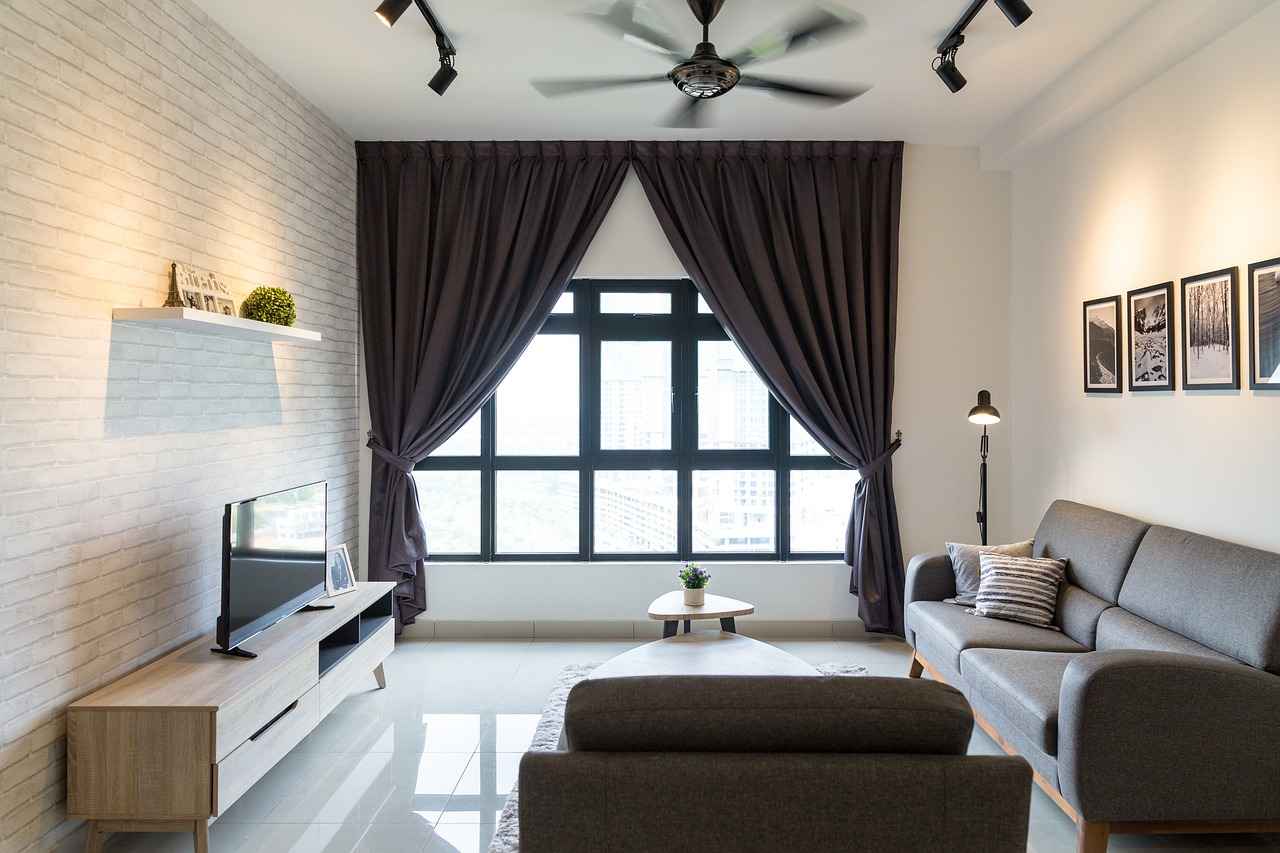
How to Utilize Color and Lighting?
Color schemes and lighting are powerful tools in interior design that can visually separate spaces without the need for physical barriers. By understanding how to effectively use these elements, you can create distinct areas within a room that serve different purposes while maintaining an open and inviting atmosphere.
Color has a profound impact on how we perceive space. Different colors can evoke various emotions and can even alter the perceived size of a room. For instance, cool colors like blues and greens tend to make a space feel larger and more open, while warm colors such as reds and yellows can create a cozy and intimate environment. By utilizing contrasting colors, you can effectively delineate different areas within a single room.
One effective method for using color to separate spaces is through painting techniques. Here are a few strategies:
- Accent Walls: Choose one wall to paint a bold color that stands out from the others. This technique can highlight a specific area, such as a reading nook or workspace.
- Color Blocking: Use two or more colors on the same wall or adjacent walls to create a dynamic visual effect. This method can help define areas while adding interest.
- Gradient Techniques: Gradually blending colors can create a soft transition between spaces, making the division feel more natural.
While color plays a crucial role, lighting is equally important in creating distinct areas. The right lighting can enhance the mood of each section of a room and provide functional illumination. Consider these lighting strategies:
- Layered Lighting: Incorporate multiple light sources, such as overhead lights, floor lamps, and table lamps, to create different atmospheres in various areas.
- Directional Lighting: Use spotlights or track lighting to focus on specific zones, such as illuminating artwork or highlighting a reading area.
- Ambient and Task Lighting: Combine soft ambient lighting with brighter task lighting in work areas to ensure functionality without sacrificing comfort.
When used together, color and lighting can enhance the overall aesthetic and functionality of a space. Here are some benefits:
- Enhanced Ambiance: The right color and lighting combination can create a welcoming atmosphere that suits various activities.
- Visual Flow: Harmonizing colors and lighting can help maintain a sense of continuity throughout the space, making transitions between areas feel seamless.
- Improved Mood: Different colors and lighting can influence your mood and energy levels, making it essential to choose combinations that promote positivity and productivity.
In summary, effectively utilizing color schemes and lighting can significantly enhance the functionality and aesthetic appeal of your space. By strategically applying these elements, you can create distinct areas that cater to different needs while preserving an open and inviting environment.
Painting Techniques for Visual Separation
When it comes to creating distinct areas within a room, painting techniques can be incredibly effective. By utilizing different paint colors, you can visually delineate spaces without the need for physical barriers. This approach not only enhances the aesthetic appeal of your home but also maximizes functionality. In this section, we will explore various techniques such as accent walls and color blocking that can help you achieve this goal.
An accent wall is a single wall in a room that is painted a different color from the other walls. This technique draws the eye and creates a focal point, effectively separating areas within an open floor plan. For instance, if you have a living room that flows into a dining area, painting one wall in a bold color can help define the living space. Choose a color that complements the overall palette of the room to maintain harmony.
Color blocking involves using two or more contrasting colors to create sections within a room. This technique can be applied in various ways, such as painting geometric shapes or using horizontal or vertical stripes. For example, you could paint the lower half of a wall one color and the upper half another, which can visually separate areas while adding a modern touch to your decor.
Using different shades of the same color can create a subtle yet effective separation. This technique is particularly useful in smaller spaces where bold colors might overwhelm. By employing lighter and darker shades of a single hue, you can create depth and dimension without sacrificing an open feel. This method is perfect for areas like a studio apartment where you want to maintain a cohesive look.
- Cost-Effective: Painting is a relatively inexpensive way to transform a space compared to structural changes.
- Flexibility: You can easily change colors or designs as your taste evolves or when you want a new look.
- Personalization: Color choices allow you to express your personality and style, making the space uniquely yours.
- Visual Impact: A well-painted wall or section can dramatically enhance the overall aesthetic of a room.
Choosing the right colors is crucial for achieving the desired effect. Consider the mood you want to create; for instance, warm tones like reds and yellows can make a space feel cozy, while cool tones like blues and greens can create a calming atmosphere. Additionally, think about how the colors interact with natural light in the room, as this can significantly alter their appearance throughout the day.
1. Test Colors: Always test paint colors on a small area before committing to a full wall.2. Use Quality Paint: Invest in high-quality paint for better coverage and durability.3. Consider Finish: The finish (matte, satin, gloss) can affect how colors appear and how easy they are to clean.4. Plan Your Design: Sketch out your ideas before starting to ensure a cohesive look.
In summary, utilizing painting techniques like accent walls and color blocking can effectively delineate spaces in your home. By carefully selecting colors and designs, you can create visually appealing divisions that enhance both functionality and style. Whether you’re looking to make a bold statement or prefer a more subtle approach, the right paint can transform your space beautifully.
Lighting as a Dividing Element
Lighting plays a crucial role in defining spaces within a room, serving both functional and aesthetic purposes. By strategically using different types of lighting, you can create ambiance, enhance the mood, and even delineate areas without the need for physical barriers. This guide explores how to effectively utilize floor lamps, pendant lights, and wall sconces to transform your living space.
Using lighting as a room divider offers several advantages. It allows you to create distinct zones within an open layout while maintaining a cohesive look. Here are some benefits:
- Enhanced Ambiance: Different lighting styles can evoke various moods, from cozy and intimate to bright and energetic.
- Flexibility: Lighting can be easily adjusted or changed to suit different occasions, making it a versatile solution.
- Visual Interest: Unique lighting fixtures can serve as decorative elements, adding character to your space.
When it comes to using lighting as a dividing element, consider these three popular options:
Floor lamps are an excellent choice for creating a cozy nook or reading corner. Positioning a tall floor lamp between two areas can visually separate them while providing focused light. Choose lamps with adjustable heads or multiple brightness settings to enhance functionality.
Pendant lights can hang over specific areas, such as dining or workspaces, serving as both a light source and a visual divider. Opt for fixtures with unique designs or colors to draw attention and add flair. For an open-concept space, consider using a cluster of pendant lights to create a defined area.
Wall sconces are perfect for adding light along walls, which can help delineate spaces without taking up floor space. They can be placed at varying heights to create a layered lighting effect, enhancing the overall aesthetic of the room. Choose sconces with dimmers for added control over the ambiance.
While lighting is effective on its own, combining it with other design elements can enhance its impact:
- Color Schemes: Pair your lighting choices with complementary colors to create a harmonious look. For instance, warm-toned lights can enhance earthy color palettes.
- Furniture Arrangement: Position furniture in a way that directs attention to your lighting fixtures, reinforcing their role as dividers.
- Textiles: Incorporate textiles like curtains or rugs that coordinate with your lighting to further define areas.
To maximize the effectiveness of your lighting as a room divider, consider these practical tips:
- Layer Your Lighting: Use a combination of ambient, task, and accent lighting to create depth and interest.
- Adjust Brightness: Utilize dimmers or smart bulbs to control the intensity of light, allowing for flexibility in mood and function.
- Highlight Features: Use lighting to draw attention to architectural features or artwork, enhancing the overall design of the space.
In conclusion, strategic lighting can significantly enhance your space by creating distinct areas while maintaining an open feel. By thoughtfully selecting and positioning floor lamps, pendant lights, and wall sconces, you can transform your room into a functional and aesthetically pleasing environment.
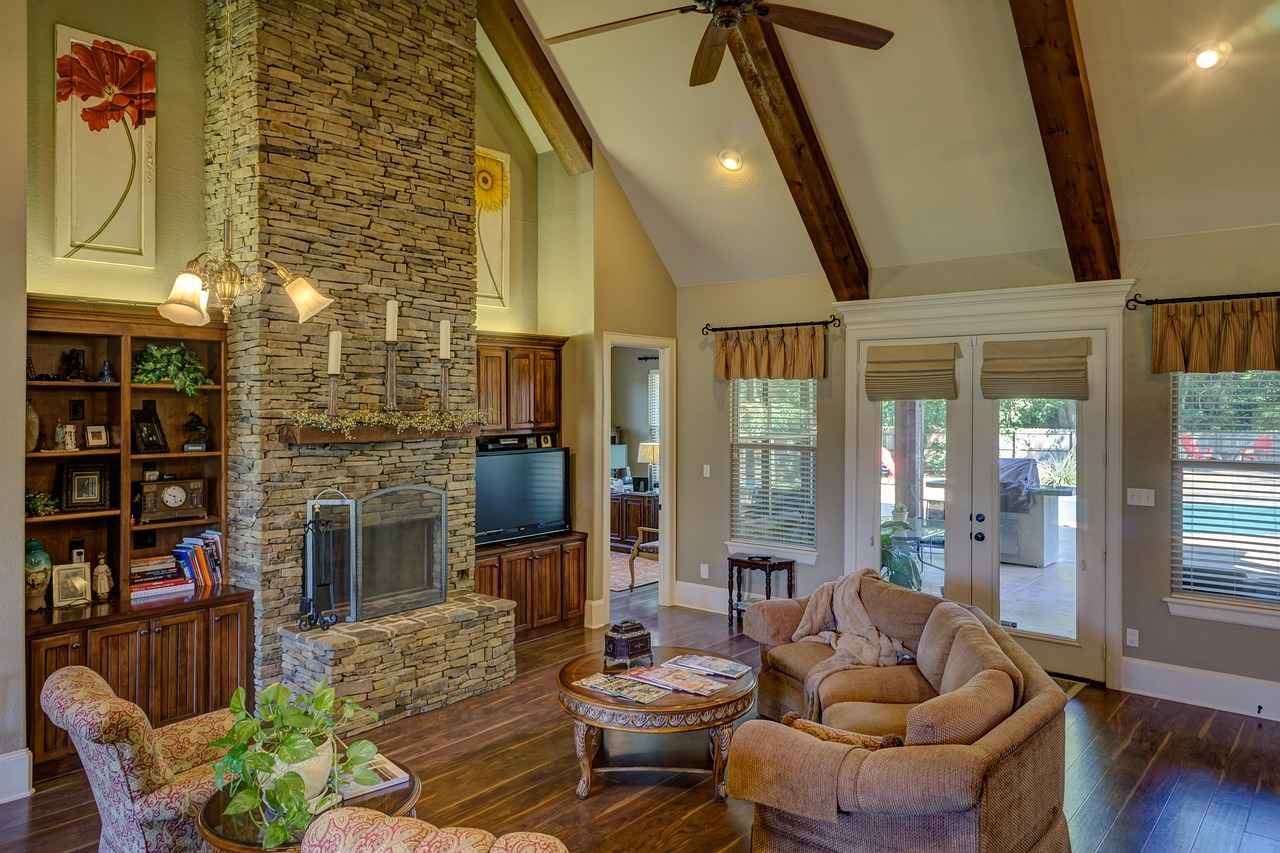
What Are Some Creative Temporary Solutions?
When it comes to maximizing space in a rental or a flexible living situation, temporary solutions can be incredibly beneficial. They allow individuals to create distinct areas without the permanence of traditional walls. In this section, we will explore various creative options for dividing spaces that are easy to remove or adjust, making them perfect for renters or those who frequently change their living arrangements.
Temporary dividers can transform a space with minimal commitment and effort. Here are some innovative ideas that can help you achieve the separation you desire:
- Room Screens: Room screens are an excellent choice for immediate impact. They come in various styles, from folding screens to more elaborate decorative options. These screens can be easily moved and stored when not in use, making them a versatile choice for any space.
- Curtains: Using curtains as room dividers is a classic yet effective method. They can be hung from a ceiling-mounted track or a tension rod, allowing you to open or close off areas as needed. Choose light fabrics for an airy feel or heavier materials for added privacy.
- Tapestries: Tapestries not only provide a visual barrier but also add a touch of artistry to your space. They can be hung on walls or suspended from the ceiling, bringing color and texture while dividing areas. This option is particularly appealing for those who appreciate bohemian or eclectic decor.
- Bookshelves: A tall bookshelf can serve as a practical and stylish divider. It offers storage for books and decorative items while creating a distinct boundary between spaces. Opt for open shelving to maintain an open feel or solid backs for more privacy.
- Plants: Incorporating plants as natural dividers is a creative way to enhance your space. Use tall potted plants or a vertical garden to create a green barrier that also improves air quality and adds life to your environment.
- Folding Screens: These versatile dividers can be easily set up and taken down, making them perfect for those who need flexibility. They come in various designs, allowing you to choose one that complements your decor.
Each of these options can be adjusted to fit your specific needs and style preferences. Whether you want to create a cozy reading nook or a private workspace, temporary dividers can help you achieve your desired layout without the hassle of construction.
When selecting a temporary divider, consider the following factors:
- Space: Assess the size of your room and the areas you wish to divide. This will help you determine the appropriate type and size of the divider.
- Functionality: Think about how you intend to use the divided spaces. For example, if you need privacy for a workspace, opt for heavier materials or taller dividers.
- Style: Choose a divider that complements your existing decor. This will ensure that the divider enhances rather than detracts from the overall aesthetic of your space.
- Ease of Use: Ensure that the divider is easy to set up and take down, especially if you plan to adjust it frequently.
By considering these factors, you can select a temporary solution that meets your needs while enhancing the functionality and style of your living space.
In summary, temporary solutions for dividing spaces offer renters and those seeking flexibility a wealth of options. From room screens and curtains to bookshelves and plants, there are numerous ways to create distinct areas without the permanence of traditional walls. Embrace these creative ideas to transform your space into a functional and inviting environment.
Using Room Screens for Immediate Impact
When it comes to dividing spaces without the permanence of walls, room screens are an excellent choice. These versatile elements not only serve a practical purpose but also enhance the aesthetic appeal of your home. In this section, we will explore various styles and materials of room screens that can transform your living space.
Room screens come in a variety of styles, allowing you to select one that complements your existing decor. Here are some popular options:
- Folding Screens: These are the most common type, typically made of wood or fabric. They can be easily moved and stored, making them ideal for temporary divisions.
- Panel Screens: These are usually larger and more stable, often made from materials like metal or glass. They can provide a more permanent feel while still being removable.
- Decorative Screens: Often featuring intricate designs or artistic elements, these screens can serve as a focal point in your room.
The material of your room screen can significantly influence both its functionality and style. Here are some materials to consider:
- Wood: Offers a classic look and durability. Wooden screens can be stained or painted to match your decor.
- Fabric: Softens the look of a room and can be easily changed to suit different seasons or moods. Look for patterns that add visual interest.
- Metal: Provides a modern touch and can be very durable. Metal screens often come in sleek designs that can enhance contemporary decor.
- Glass: Allows light to flow through while still providing a sense of separation. Frosted or etched glass can add privacy without sacrificing brightness.
Integrating room screens into your space can be both functional and stylish. Here are some tips:
- Define Spaces: Use screens to create distinct areas within a larger room, such as a reading nook or a workspace.
- Add Texture: A fabric screen can introduce softness and warmth to a room, balancing out harder surfaces like wood or metal.
- Enhance Privacy: In shared living spaces, screens can provide a sense of seclusion, making them perfect for bedrooms or home offices.
- Use Color and Patterns: Choose screens that incorporate colors or patterns that tie together the overall theme of your room.
Proper maintenance will keep your room screens looking their best. Here are some maintenance tips:
- Regular Cleaning: Dust fabric screens and wipe down wooden or metal screens to prevent buildup.
- Check for Damage: Regularly inspect your screens for any signs of wear and tear, especially at the hinges or joints.
- Store Properly: If you need to store your screens, ensure they are kept in a dry place to prevent mold or damage.
In summary, room screens are a versatile and stylish solution for dividing spaces without the need for permanent walls. With various styles and materials available, you can easily find a screen that not only enhances your decor but also meets your functional needs. By incorporating these elements thoughtfully, you can create a beautifully organized living space that reflects your personal style.
Employing Tapestries for Artistic Division
Tapestries are not just decorative pieces; they can also serve as functional room dividers that enhance the overall aesthetic of your space. By incorporating tapestries into your interior design, you can create distinct areas without the need for permanent walls. This article explores how to effectively hang and style tapestries to transform your living spaces into inviting and stylish environments.
Tapestries offer a multitude of benefits as room dividers. They are versatile, allowing you to change the look of your space with ease. Unlike traditional dividers, tapestries can be easily moved, giving you the flexibility to reconfigure your room as needed. Additionally, they can add color, texture, and even artistic flair to your home, making them an excellent choice for those looking to personalize their space.
To maximize the impact of your tapestry, consider the following tips:
- Select the Right Wall: Choose a wall that can serve as a backdrop for your tapestry. A blank wall can provide a striking contrast, allowing the tapestry to stand out.
- Use Appropriate Hardware: Invest in quality hanging hardware. Options like tapestry rods or clips can ensure that your tapestry hangs securely and looks polished.
- Consider Height: Hang the tapestry at eye level for the best visual impact. This positioning allows for better appreciation of the artwork and creates a more inviting atmosphere.
Once your tapestry is hung, consider how to style the surrounding area to create a cohesive look:
- Add Complementary Decor: Incorporate furniture and accessories that match or complement the colors and patterns of your tapestry. This creates a unified design that draws the eye.
- Layer Textures: Pair your tapestry with other textured elements like cushions or throws. This layering adds depth and warmth to the space.
- Incorporate Lighting: Use soft lighting to highlight the tapestry. Wall sconces or fairy lights can create a magical ambiance that enhances the overall aesthetic.
Beyond simple wall hangings, there are numerous creative ways to use tapestries as dividers:
- Room Separation: Use a large tapestry to separate a living area from a workspace. This not only provides physical separation but also adds a decorative touch.
- Temporary Divisions: For renters or those who frequently change their decor, tapestries can serve as temporary dividers that can be easily taken down and relocated.
- Outdoor Spaces: Consider using weather-resistant tapestries to create outdoor privacy. They can transform a patio or balcony into a cozy retreat.
To keep your tapestries looking their best, regular maintenance is key:
- Dust Regularly: Use a soft cloth or vacuum with a brush attachment to remove dust.
- Follow Care Instructions: Always check the care label for washing instructions. Some tapestries may be machine washable, while others require professional cleaning.
- Store Properly: If you need to take down your tapestry, roll it up instead of folding it to prevent creases.
Incorporating tapestries as room dividers not only enhances your space’s functionality but also allows for personal expression through art. With the right techniques and styling, you can create inviting areas that reflect your unique taste and lifestyle.
Frequently Asked Questions
- What are room dividers?
Room dividers are creative solutions that help separate spaces without the need for traditional walls. They can be anything from furniture to curtains or even plants, allowing you to define areas while keeping an open feel.
- How can I use furniture to divide a room?
You can strategically position furniture like sofas, bookshelves, and tables to create distinct zones. For instance, placing a bookshelf in the middle of a room not only provides storage but also acts as a visual barrier.
- Are there DIY options for room dividers?
Absolutely! DIY options like using curtains, building a bookcase divider, or even hanging tapestries can be fun and cost-effective ways to create personal and stylish separations in your space.
- How can I use color and lighting to divide spaces?
Using different paint colors on walls or employing strategic lighting can visually separate areas. Techniques like accent walls or using floor lamps can help create distinct atmospheres in your room.
- What are some temporary solutions for room division?
Temporary solutions include using room screens, curtains, or even foldable dividers. These options are great for renters or anyone looking for flexibility in their space arrangement.
